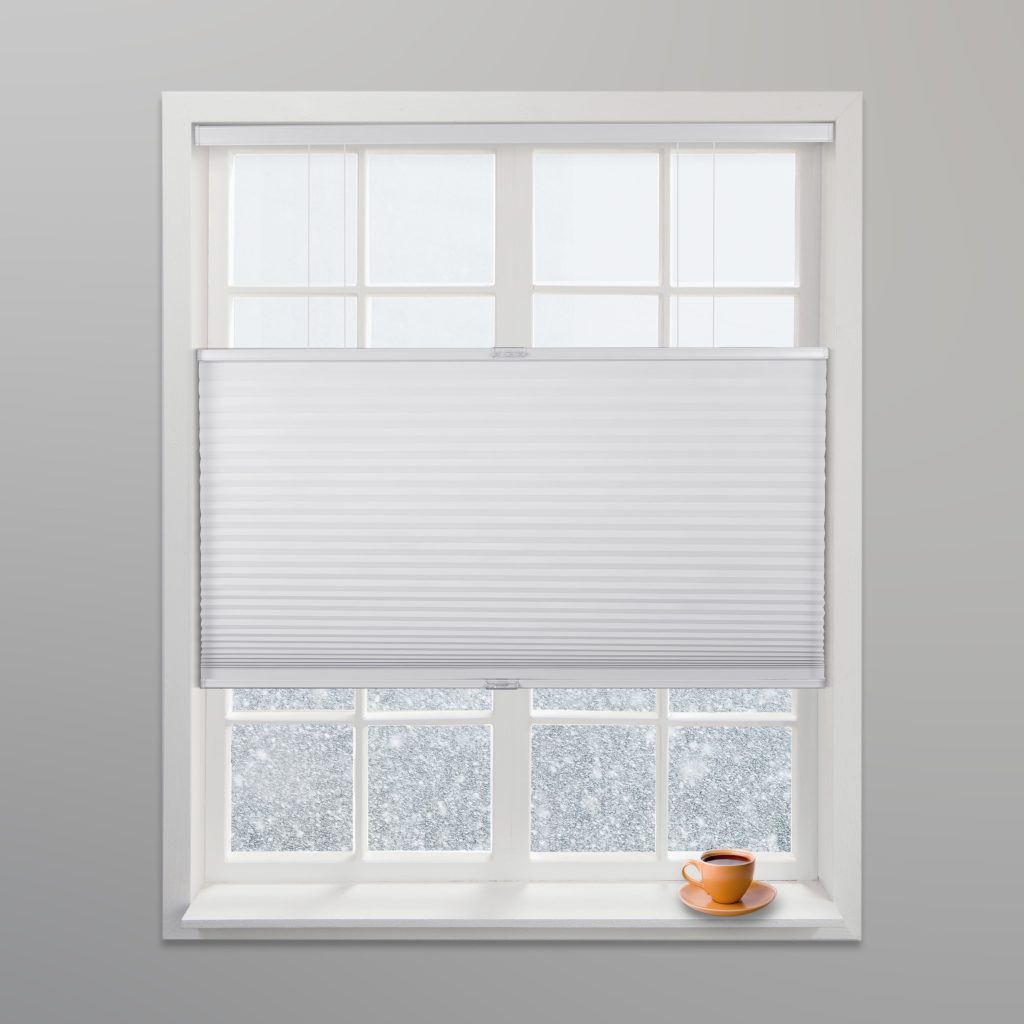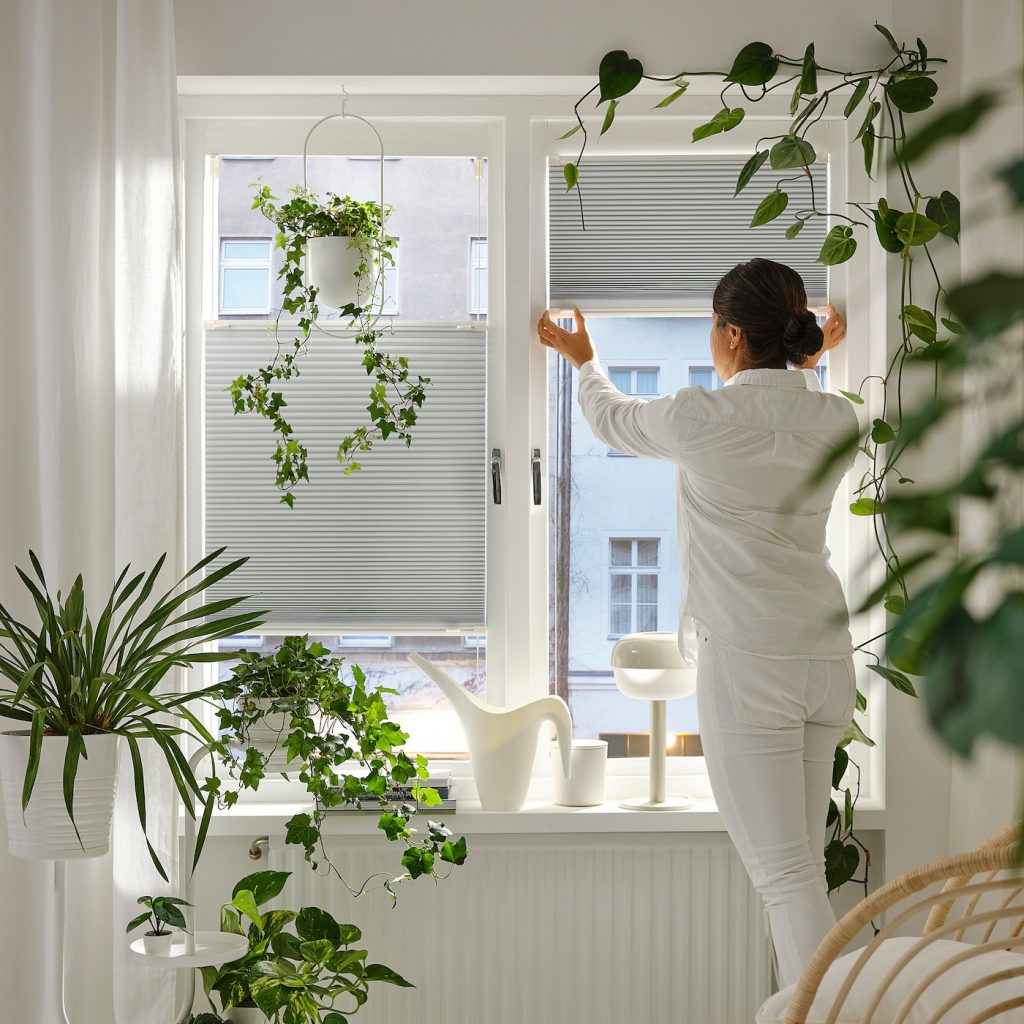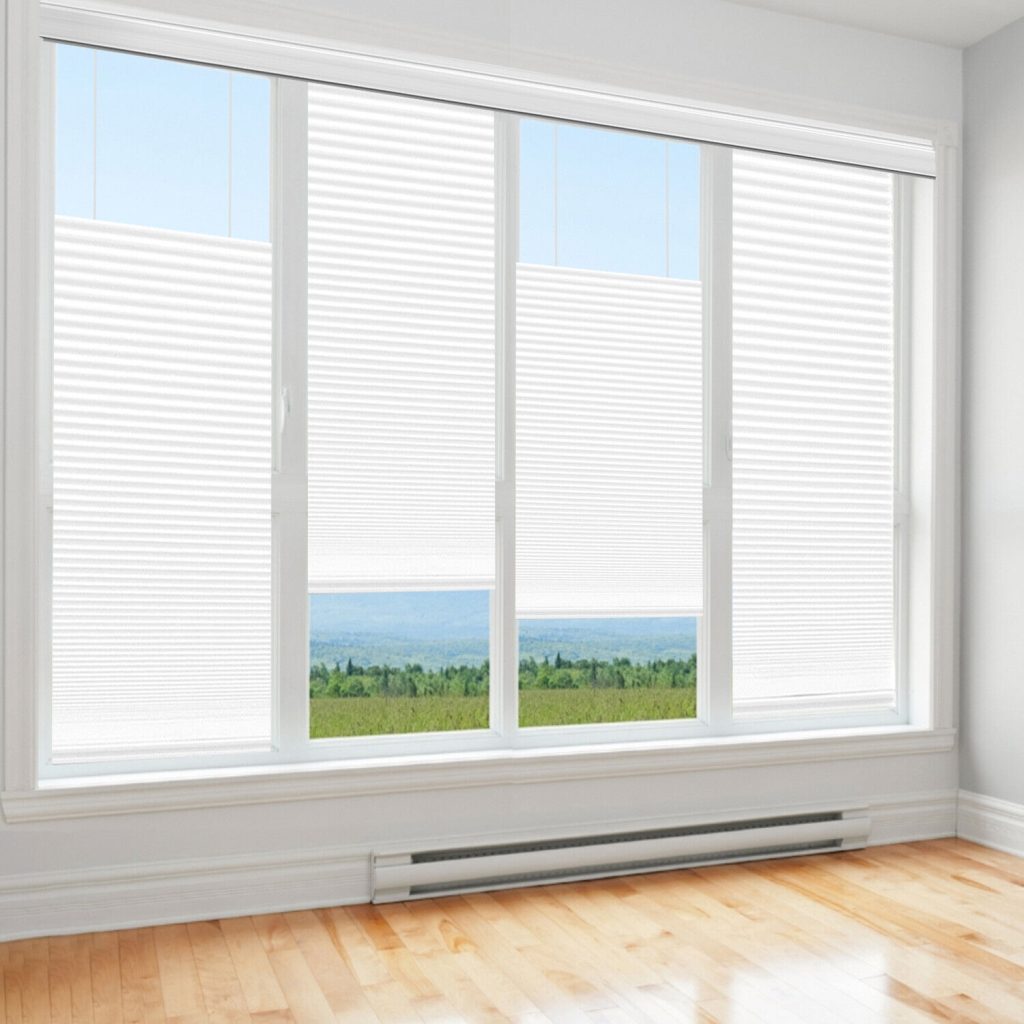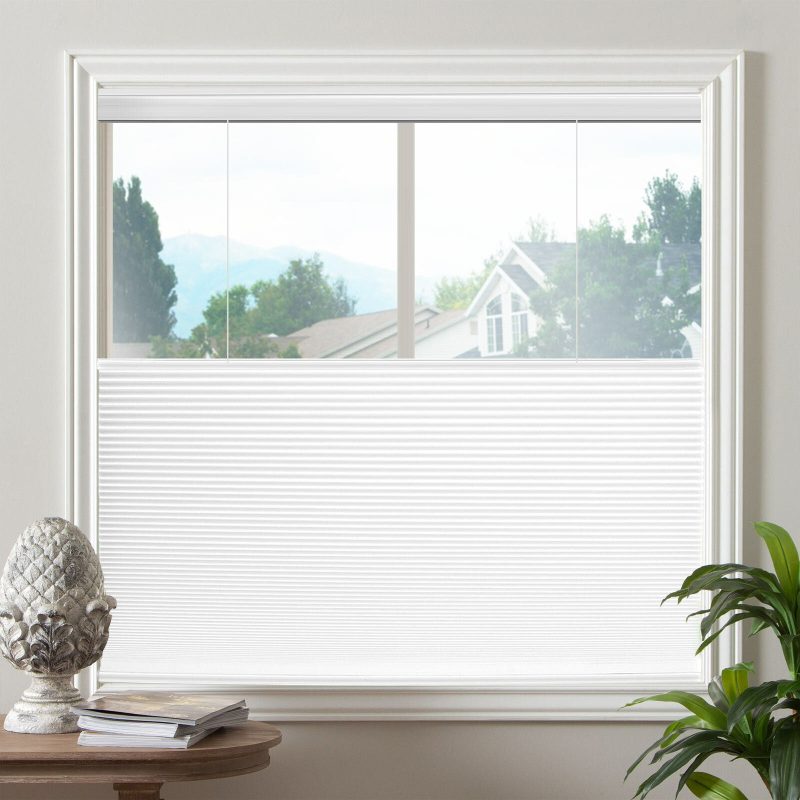Introduction
Blinds up vs blinds down – Controlling the position of your blinds—whether up or down—can significantly impact the ambiance, energy efficiency, and privacy of your living or working space. The decision to raise or lower your blinds is not merely an aesthetic choice but also serves practical purposes, depending on factors like time of day, season, and individual preferences. This comprehensive guide explores the benefits and uses of different blind positions, helping you optimize your environment for maximum comfort and efficiency.

Blinds Up: Letting Light In
Natural Light and Mood Enhancement
Raising your blinds allows natural light to flood your space, creating an inviting and airy atmosphere. Exposure to natural light is known to boost mood, increase productivity, and reduce reliance on artificial lighting during the day, potentially saving energy costs.
Energy Efficiency and Temperature Control
During colder months, opening your blinds to let sunlight in can help warm up a room naturally, reducing the need for heating. Sunlight acts as a passive heat source, especially when it directly hits thermal mass elements like concrete floors or brick walls, which store and release heat slowly.
Views and Mental Well-being
Lifting your blinds provides unobstructed views of the outdoors, which can be particularly beneficial for mental well-being. Connecting visually with nature, even if it’s just a glimpse of greenery or a blue sky, can promote relaxation and reduce stress levels.
Blinds Down: Enhancing Privacy and Light Control
Privacy Protection
Lowering your blinds is a straightforward way to maintain privacy, especially in street-facing rooms or during evenings when indoor lights might otherwise reveal your activities to passersby. This is particularly important in bedrooms and bathrooms where privacy is paramount.
Light Filtering and Room Darkening
When you want to block harsh sunlight, reduce glare on screens, or create a cozy atmosphere, adjusting your blinds downward can help. Depending on the type of blinds (e.g., blackout blinds or cellular shades), they can effectively darken a room, making them ideal for nurseries, home theaters, or bedrooms during daytime naps.
Energy Conservation in Warm Climates
In warmer seasons, keeping blinds down during peak sunlight hours prevents excessive heat gain, reducing the workload on air conditioning systems. Reflective or light-colored blinds can further enhance this effect by bouncing sunlight back outside, keeping interiors cooler.
Strategic Blind Positioning Throughout the Day
- Morning: Start the day by raising blinds to welcome morning light and warmth into your home. East-facing windows benefit most from this early light exposure.
- Midday: As the sun reaches its highest point, consider partially lowering blinds to diffuse harsh light and manage indoor temperatures, especially in south-facing rooms.
- Evening: Lower blinds to retain heat during cooler evenings or for privacy as night falls. West-facing windows may require earlier closure to block the strong, late-afternoon sun.
Choosing the Right Blinds
The decision between blinds up or down can be further optimized by selecting the right type of blinds for your needs. Options like top-down-bottom-up shades offer flexible positioning, allowing light in while maintaining privacy. Motorized blinds provide remote control convenience, enabling precise adjustments throughout the day.

Fully Open (Blinds Up)
1. Maximum Light: Fully raising your blinds allows maximum natural light to enter the room, creating a bright and airy atmosphere. This is ideal during the daytime when you want to maximize sunlight and reduce the need for artificial lighting.
2. Unobstructed View: When blinds are fully open, you can enjoy an unobstructed view of the outdoors. This is perfect for rooms with scenic views or for maintaining a connection with the outside environment.
3. Enhanced Space: By lifting blinds completely, you can visually expand the space of a room, making it feel larger and more open.
4. Minimal Privacy: Keep in mind that fully raising blinds provides minimal privacy, as it exposes the interior of your home to outside view. Consider this position for rooms where privacy is less of a concern, such as during the day or in less private areas.
Partially Open (Blinds Tilted)
1. Diffused Light: Tilting blinds partially allows you to control the amount of light entering the room. You can achieve a softer, diffused light that reduces glare while still maintaining some level of brightness.
2. Balanced Privacy: Partially tilted blinds offer a balance between privacy and light. They obscure the view from outside while allowing enough natural light to filter into the room.
3. Temperature Control: Adjusting blinds to a tilted position helps regulate room temperature by blocking direct sunlight but still allowing some natural warmth to enter.
4. Decorative Appeal: Tilted blinds add a stylish touch to your windows, creating interesting patterns of light and shadow that enhance the room’s décor.
Fully Closed (Blinds Down)
1. Complete Privacy: Lowering blinds fully provides maximum privacy by blocking outside view into your home. This is essential for bedrooms, bathrooms, and areas where privacy is paramount.
2. Light Control: Closed blinds effectively block out direct sunlight, helping to maintain a cooler indoor temperature and prevent furniture and flooring from fading due to UV exposure.
3. Security: Closed blinds create a barrier that deters potential intruders from seeing inside your home, enhancing security.
4. Cozy Atmosphere: Lowered blinds create a cozy, intimate atmosphere, making them ideal for evening hours or when you want to create a more enclosed feel in your living spaces.
Choosing the Right Position
The ideal blinds position often depends on factors such as the time of day, room function, desired ambiance, and privacy needs:
- Daytime: Consider fully opening or partially tilting blinds to maximize natural light while maintaining a comfortable indoor environment.
- Nighttime: Lower blinds fully for enhanced privacy, security, and a cozy atmosphere.

Balancing Aesthetics and Functionality
The visual appeal of your blinds, whether up or down, is equally important. The style, color, and material of your blinds can significantly impact the overall interior design of a room. When choosing blinds, consider how they will look in both raised and lowered positions, ensuring they complement your decor and enhance the room’s aesthetic.
Integrating with Interior Design
For minimalist or modern designs, sleek roller blinds or venetian blinds with clean lines can maintain a cohesive look when fully raised, almost disappearing into the window frame. In contrast, more traditional or rustic settings might benefit from the warmth and texture of wooden blinds, which add character even when lowered.
Color Coordination
Selecting blind colors that either match or contrast your walls and furniture thoughtfully can elevate the room’s ambiance. Neutral tones tend to blend seamlessly, while bold hues or patterns can become a focal point, adding depth and interest to the space.
Smart Home Integration
Advancements in smart home technology now allow for even greater control over your blinds’ positioning. Smart blinds can be programmed to raise and lower at specific times of day, optimizing natural light intake, and energy efficiency automatically. This not only streamlines daily routines but also contributes to a more sustainable lifestyle.
Voice Control and Automation
By integrating your blinds with smart assistants like Amazon Alexa or Google Home, you can adjust your blinds hands-free using voice commands. This feature is particularly useful for those with mobility issues or for managing hard-to-reach windows.
Scene Setting and Mood Lighting
Smart blinds can also be part of predefined ‘scenes’ or settings, coordinating with lighting and other smart devices to create the perfect atmosphere for various activities. For instance, a ‘movie night’ scene might involve lowering blackout blinds and dimming the lights, while a ‘morning wake-up’ scene could involve gradually raising the blinds to simulate a natural sunrise.
Maintenance and Longevity
Regular maintenance is crucial for keeping your blinds looking and functioning at their best, regardless of their position. Dust buildup can be minimized by regularly vacuuming or wiping down slats, and proper operation (avoiding forceful pulling or twisting) ensures mechanisms remain in good condition. Investing in high-quality blinds that are durable and easy to maintain can save on replacement costs in the long run.
In conclusion
Whether you choose to raise or lower your blinds, understanding the benefits of each position empowers you to create an environment that is not only visually pleasing but also energy-efficient and supportive of your daily routines and well-being. By strategically manipulating natural light and managing privacy, you can transform your space into a comfortable haven tailored to your lifestyle.
